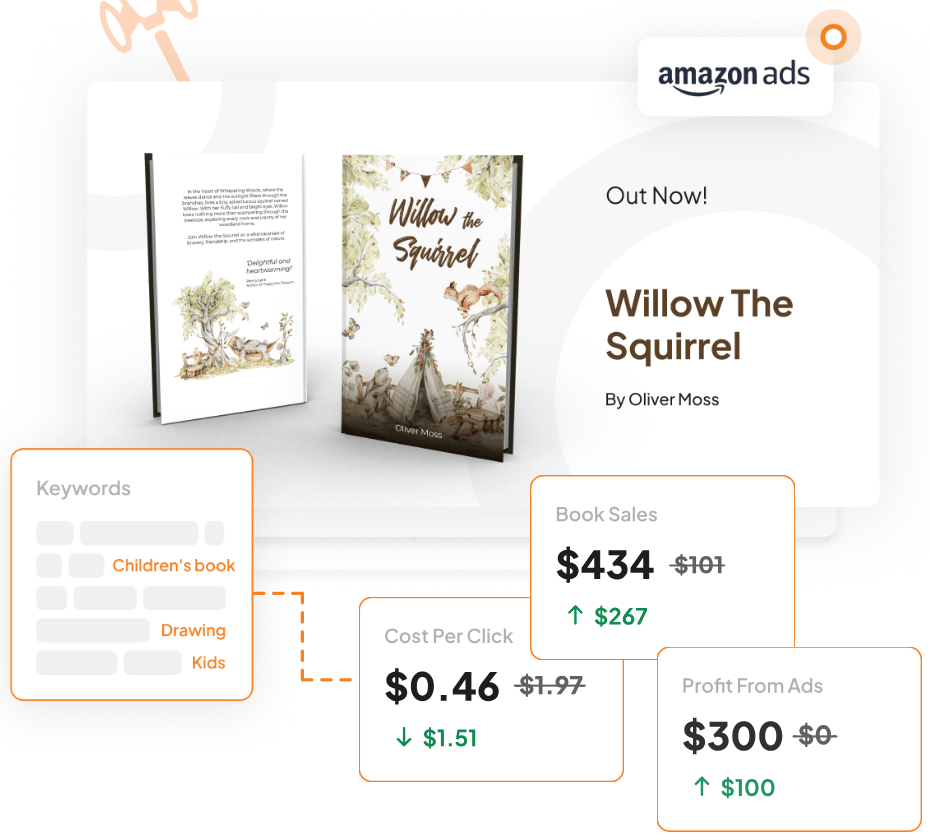Embarking on the journey of publishing a book is akin to setting sail on an uncharted sea. It’s thrilling, daunting, and promises adventure at every turn. Yet, one of the first crossroads every aspiring author faces is the decision between traditional vs self-publishing.
This choice is not merely a step in the process; it’s a defining moment that shapes the course of your literary voyage. Understanding the nuances of each path can empower you to make informed decisions, ensuring your book finds its rightful place in the world.
In this guide, we’ll explore the landscapes of both traditional and self-publishing, providing you with the compass you need to navigate these waters.
Understanding the Publishing Landscape
The publishing world is vast, with various avenues leading to the final destination: your book in the hands of readers.
Whether you envision your book gracing the shelves of bookstores or being downloaded as an e-book, knowing the terrain is crucial. Each path has its own set of challenges and rewards, akin to choosing between a well-trodden path and a road less travelled.
Defining Traditional Publishing
Traditional publishing is the age-old route where authors partner with established publishing houses.
These houses are the gatekeepers of the literary world, often requiring manuscripts to pass through the scrutinizing eyes of agents and editors. The process can be likened to a rite of passage, where only the worthy manuscripts are selected for publication.
Once a manuscript is accepted, the publishing house is responsible for editing, designing, marketing, and distributing the book. This partnership allows authors to focus on their craft while the publisher handles the business aspects. However, this comes with its own set of expectations and constraints.
Google Docs is for notes. Scrivener is for novels. Upgrade your writing game and try it for free today!

The Traditional Publishing Process
Traditional publishing can be a long and winding journey. It typically begins with the search for a literary agent, who acts as a bridge between the author and publishing houses. This step is crucial, as many publishers do not accept unsolicited manuscripts.
- Submission: Authors submit query letters or proposals to agents, highlighting their work’s potential.
- Representation: If an agent sees promise, they represent the author and pitch the manuscript to publishers.
- Contract Negotiation: Once a publisher shows interest, contracts are negotiated, outlining royalties, rights, and responsibilities.
- Editing and Design: The manuscript undergoes several rounds of editing, and the book cover is designed.
- Marketing and Distribution: The publisher develops a marketing plan and distributes the book to retailers.
When submitting your manuscript, ensure it aligns with the publisher’s genre preferences. Tailor your query letter to reflect your understanding of the publisher’s brand.
This attention to detail can make your submission stand out. Consider attending literary conferences to network with agents and editors.
Pros and Cons of Traditional Publishing
Traditional publishing offers a sense of validation and prestige. The backing of a reputable publisher can open doors to wider distribution channels, increased visibility, and potential bestseller status. However, this path is not without its hurdles.
| Pros | Cons |
|---|---|
| Professional editing and design | Long waiting times for publication |
| Established distribution networks | Loss of creative control |
| Potential for advances and royalties | Lower percentage of royalties compared to self-publishing |
Despite its benefits, traditional publishing demands patience and resilience. The competitive nature means many manuscripts face rejection before finding a home.

Exploring Self-Publishing
In contrast to the traditional route, self-publishing allows authors to chart their course. It’s akin to being the captain of your ship, where you make all the decisions, from the book’s content to its cover design. This path has gained momentum recently, providing a viable alternative for those seeking autonomy.
What is Self-Publishing?
Self-publishing is the process of publishing authors’ work independently without the involvement of a traditional publishing house. This approach empowers authors to retain full control over their content, pricing, and distribution.
Platforms like Amazon Kindle Direct Publishing (KDP) and Smashwords have democratized the publishing industry, allowing anyone with a story to share it with the world.
However, this freedom comes with the responsibility of managing all aspects of the publishing process. Authors must wear multiple hats from editing to marketing, ensuring their book reaches its intended audience.
Self-Publishing Tips for Success
While self-publishing offers unparalleled freedom, success requires strategic planning and execution. Here are some tips to help you navigate the self-publishing waters:
- Invest in Professional Editing: A well-edited book stands out. Hire a professional editor to polish your manuscript and enhance its readability.
- Design an Eye-Catching Cover: Your book’s cover is its first impression. Invest in a professional designer to create a cover that captures your book’s essence.
- Build Your Author Platform: Engage with your audience through social media, blogs, and newsletters. Building a loyal readership is key to long-term success.
Consider using beta readers to gather feedback before finalizing your manuscript. These readers can provide valuable insights into your book’s strengths and areas for improvement.
Their feedback can guide your revisions and enhance your book’s appeal. Remember, even the most successful authors rely on early feedback to refine their work.
Pros and Cons of Self-Publishing
Self-publishing offers a wealth of opportunities but also presents unique challenges. Understanding the pros and cons can help you decide if this path aligns with your goals.
Pros of self-publishing include complete creative control, higher royalty percentages, and the ability to publish on your timeline. You can experiment with different genres and marketing strategies without external constraints.
However, editing, marketing, and distribution responsibility falls solely on your shoulders, requiring time, effort, and resources.
When setting your book’s price, research similar titles in your genre. Competitive pricing can attract more readers and increase sales. Consider offering promotional discounts or free copies to generate buzz. Keep track of sales data to adjust your strategy as needed.

Comparing Traditional vs Self-Publishing
The choice between traditional and self-publishing is not a one-size-fits-all decision. It’s a personal choice that depends on your goals, resources, and aspirations as an author. Comparing these two paths can illuminate which best aligns with your vision.
Key Differences Between the Two Approaches
Traditional publishing and self-publishing differ significantly in process, control, and financial aspects. The publisher handles most tasks in traditional publishing, but authors must adhere to contractual obligations. In contrast, self-publishing offers complete autonomy, allowing authors to make all decisions.
Financially, traditional publishing may offer advances, but royalties are typically lower. Self-publishing allows authors to keep a larger share of profits, but initial costs for editing and design are borne by the author.
Which Path is Right for You?
Deciding between traditional and self-publishing is a deeply personal choice. Consider your goals, resources, and willingness to take on various roles.
If you seek validation and support, traditional publishing may be your path. If independence and control are your priorities, self-publishing could be the right fit.
Reflect on your long-term goals as an author. Are you seeking widespread recognition or niche market success? Your goals can guide your choice between traditional and self-publishing.
Consider experimenting with both paths for different projects to see what resonates with you.
No marketing platform? No social following? No problem!
Publisher Rocket helps you market your debut novel like a pro.
It’s a gamechanger for debut authors – try it today!


Making an Informed Decision
As you stand at the crossroads of traditional vs self-publishing, making an informed decision is paramount.
This choice will shape your journey as an author and impact how your book reaches readers. By assessing your goals and resources, you can embark on a path that aligns with your vision.
Assessing Your Goals as an Author
Take a moment to reflect on what you hope to achieve as an author. Do you dream of seeing your book on bookstore shelves or envision reaching readers through digital platforms? Understanding your goals will guide your decision-making process.
Your goals can encompass financial aspirations, creative control, and the type of audience you wish to reach. Whether you seek fame, artistic fulfillment, or financial success, aligning your goals with the right publishing path is essential.

Evaluating Your Resources and Support
Your financial and personal resources play a crucial role in your publishing journey. Traditional publishing may require patience and persistence, while self-publishing demands time, effort, and investment in editing and marketing.
Consider the support system available to you: a network of fellow authors, access to professional services, or a dedicated readership. These resources can influence your decision and enhance your chances of success.
Taking the Next Steps in Your Publishing Journey
With a clear understanding of traditional vs self-publishing, you’re ready to embark on the next steps of your publishing journey. This stage involves creating a plan, finding your community, and embracing the adventure.
Creating a Publishing Plan
A well-crafted publishing plan serves as a roadmap for your journey. It outlines your goals, timeline, and strategies for reaching your audience. Whether you’re pursuing traditional publishing or self-publishing, a plan helps you stay organized and focused.
Include key milestones such as manuscript completion, editing phases, and marketing initiatives. This plan acts as a guiding light, keeping you on track and motivated throughout the process.
Feeling lost with your debut novel?
Fiverr Pro connects you with expert editors, designers, and marketers – everything you need to get your book ready for success!

Finding Your Community and Support System
Writing can be a solitary endeavor, but publishing thrives on collaboration and community. Connect with fellow authors, join writing groups, and engage with readers through social media. These connections provide support, feedback, and opportunities for growth.
Your community can offer valuable insights, encouragement, and camaraderie as you navigate the challenges of publishing. Building a network enriches your journey and enhances your chances of success.
Embracing Your Publishing Adventure
As you set sail on your publishing adventure, remember that every author’s journey is unique. Embrace the challenges and celebrate the victories along the way. Whether you choose traditional publishing, self-publishing, or a combination of both, your story is worth sharing with the world.
With determination, creativity, and a sense of adventure, you can navigate the publishing landscape and achieve your dreams. The world is waiting to hear your voice—let it be heard.








